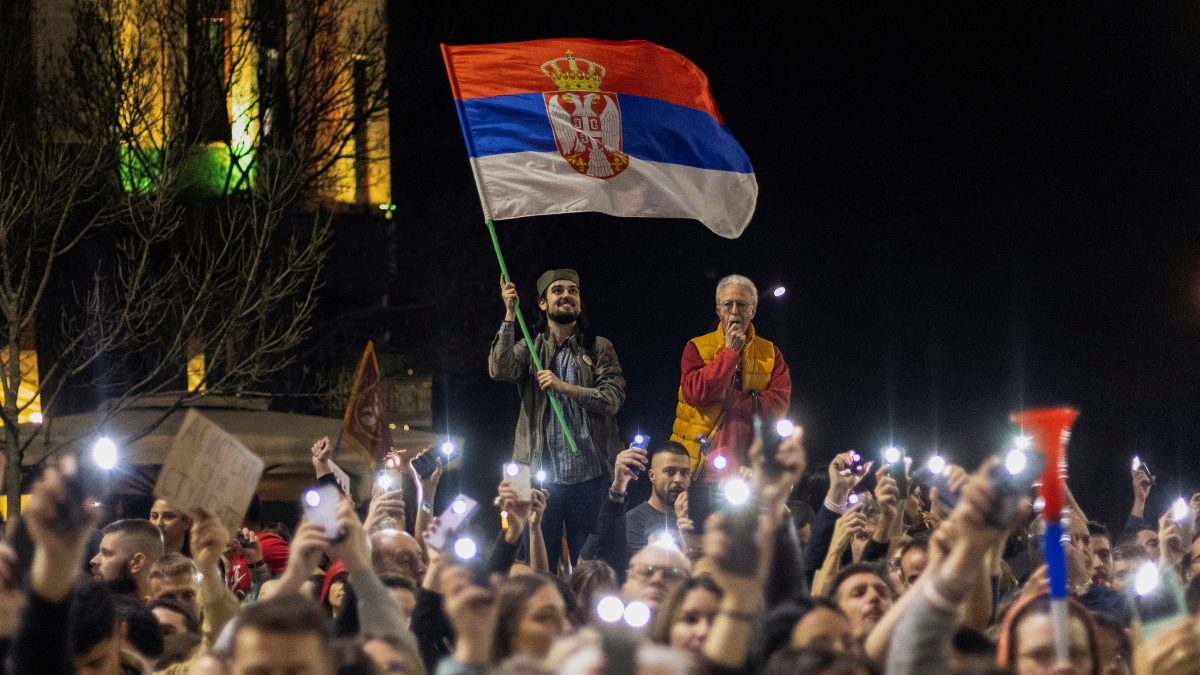Thousands gathered in central Belgrade on March 15, standing united in protest against the Serbian government. Suddenly, a peculiar and terrifying sound interrupted the peaceful demonstration—a noise witnesses described as akin to “some powerful machine hurtling up from behind.”
Tamara Bojanovski, among the crowd of protesters, remembered clearly how the mass of people swiftly parted, scrambling for sidewalks in panic. Stefan, a student, recounted feeling a “rumble” quickly followed by a “whoosh,” an invisible force seemingly speeding towards them. Another student, Dragica, described it vividly as “a wave travelling through us.”
“People felt faint, and some fell over,” explained Bozo Prelevic, a lawyer and former joint interior minister, recounting the alarming incident.
Though the unsettling noise lasted mere seconds, its aftermath sparked widespread speculation, igniting headlines, flooding social media, and dominating talk shows. The theory: authorities had illegally deployed a sonic weapon to disperse protesters.
Sonic weapons, controversial and banned under Serbian law, incapacitate targets using powerful acoustic emissions, potentially causing severe nausea, headaches, and ear damage.
Initially, Serbian authorities flatly denied possessing such equipment. That position shifted dramatically when Interior Minister Ivica Dacic admitted the police had indeed purchased Long-Range Acoustic Devices (LRADs)—equipment commonly used for crowd control in the US, Australia, Greece, and Japan—from the United States in 2021.
Despite this admission, Serbia’s police, intelligence agency (BIA), and military uniformly denied any use of the devices during the protest. President Aleksandar Vucic, now under immense pressure amid ongoing civil unrest, sought external expertise. He announced Russia’s FSB intelligence agency had dispatched investigators at Serbia’s request. American FBI investigators, he added, were also expected shortly. However, the US Department of Justice has not commented on these developments.
Impact Shorts
More ShortsHuman rights watchdog, The Omega Foundation, reviewed photos, witness accounts, and audiovisual footage obtained by Reuters. Their findings were inconclusive, yet researcher Neil Corney remarked, “We really haven’t seen an effect like this. It was so distinctive.”
Earshot, a non-profit specialising in audio investigations, noted the possibility that the noise originated from a vortex ring gun—an experimental non-lethal device designed for crowd dispersal through high-energy air vortices. They stressed, however, that more research was needed.
Genasys, the US company manufacturing LRADs, directly refuted claims regarding their device’s use, stating the available audio and video evidence “does not support the use of an LRAD.”
The dramatic incident occurred amid widespread outrage sparked by a deadly accident in Novi Sad, where 15 people died due to a train station roof collapse attributed to corruption and substandard construction. The tragedy has driven hundreds of thousands to protest, ultimately forcing Prime Minister Milos Vucevic’s resignation and significantly challenging Vucic’s presidency.
Geolocation data indicated the mysterious sonic wave travelled along Belgrade’s Kralja Milana Street, extending over 500 metres. Zoran Radovanovic, an epidemiologist present during the protest, described the chaotic aftermath vividly: “The street emptied … like when Moses parted the Red Sea.”
As investigators from both Russia and the U.S. converge on Belgrade, the mysterious sonic incident remains shrouded in intrigue, its echoes resonating through Serbia’s turbulent political landscape.
With inputs from Reuters


)

)
)
)
)
)
)
)
)



